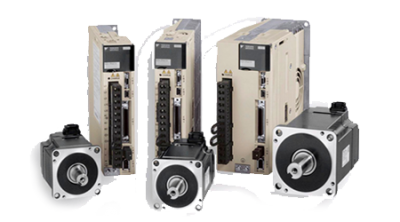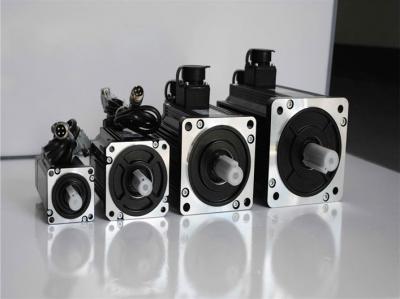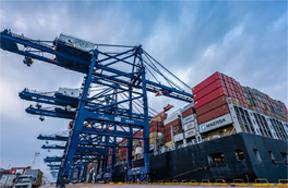We ship all parts by DHL, UPS, FedEx, TNT and so on.
If the industrial control components can not work, there are three solutions:
1. Pls return to us for a full refund
2. Pls return to us for exchange
3. Pls return to us for repair.
All parts new are covered by Shenzhen Viyork 12 months warranty. For used one, we will test well before the delivery with six months warranty. All parts, like ac servo motor and servo drive, are sold by Shenzhen Viyork with original and good working condition.
As a professional supplier, we provide plenty of ABB industrial automation products, siemens industrial automation products and other devices.
We can accept the payment by T/T, Western Union, PayPal and so on.
A servo motor is either a rotary actuator or a linear actuator that controls the angling, positioning, speed and acceleration of a piece of machinery.
Machines that run on electric servo motors can be activated and controlled via sensors. Whether an application relies on torque or forward momentum, an ac servo motor will generally meet the demands with greater precision and reliability than other motor types. As such, servo motors are considered the wave of the future in the technological sector.
What is a servo motor in relation to other motors? This can best be answered by comparing the mechanisms of an electric servo motor to the other actuator motor type, the stepper motor.
The Servo motor comprises of the three-wire system known as Power, Ground and Control whereas DC motor is a two-wire system known as Power and Ground.
Servo motor has an assembly of four things DC motor, gearing set, control circuit and a position sensor. DC Motor does not comprise of any assembly.
Servo motor does not rotate freely and continuously like DC motor. Its rotation is limited to 180⁰ whereas DC motor rotates continuously.
Servo motors are used in robotic arms, legs or rudder control system and toy cars. DC motors are used in fans, car wheels, etc.
The servo motor is most commonly used for high technology industrial automation devices in the industrial application like automation technology. It is a self-contained electrical device, that rotates parts of a machine with high efficiency and great precision. The output shaft of this motor can be moved to a particular angle. Servo motors are mainly used in home electronics, toys, cars, aeroplanes, etc. This article discusses what is a servo motor, servo motor working, servo motor types and its applications.
A servo drive is a special electronic amplifier used to power electric servomechanisms.
A servo drive monitors the feedback signal from the servomechanism and continually adjusts for deviation from expected behaviour.
In a servo system, a servo drive or servo amplifier is responsible for powering the servo motor. The servo drive is an incredibly important component in determining the performance of the servo system. Servo drives offer a wide range of advantages for automatic machining systems, including superior positioning, speed, and motion control.
Servo systems combine a high-performance servo motor with a servo amplifier (drive) to achieve extremely accurate position, velocity, or torque control. Select system size based on power requirements. For highest performance, keep load inertia within 10x of motor inertia. Add power and feedback cables for a complete system.
As a industrial automation products supplier, our servo drive have plenty of functions.
A servo drive receives a command signal from a control system, amplifies the signal, and transmits electric current to a servo motor in order to produce motion proportional to the command signal. Typically, the command signal represents a desired velocity, but can also represent a desired torque or position. A sensor attached to the servo motor reports the motor's actual status back to the servo drive. The servo drive then compares the actual motor status with the commanded motor status. It then alters the voltage, frequency or pulse width to the motor so as to correct for any deviation from the commanded status.
In a properly configured control system, the servo motor rotates at a velocity that very closely approximates the velocity signal being received by the servo drive from the control system. Several parameters, such as stiffness (also known as proportional gain), damping (also known as derivative gain), and feedback gain, can be adjusted to achieve this desired performance. The process of adjusting these parameters is called performance tuning.
Although many servo motors require a drive specific to that particular motor brand or model, many drives are now available that are compatible with a wide variety of motors.
So functionally speaking, signal amplification is what is going on inside of a servo drive.
Hence, the reason a drive is sometimes referred to as a servo amplifier.
Servo amplifiers are the controlling heart of industrial control components in a servo system. The servo amplifiers comprise a three-phase, power supply, and high-performance control unit all housed in a single enclosure. The several control loops are realized totally digital in the microcontroller.
Servo systems combine a high-performance ac servo motor with a servo amplifier (drive) to achieve extremely accurate position, velocity, or torque control.
Select system size based on power requirements. For highest performance, keep load inertia within 10x of motor inertia. Add power and feedback cables for a complete system.
The input voltage, output voltage and frequency, and overall power handling depend on the design of the specific device or circuitry. The inverter does not produce any power; the power is provided by the DC source.
A power electric inverter can be entirely electronic or may be a combination of mechanical effects (such as a rotary apparatus) and electronic circuitry. Static inverters do not use moving parts in the conversion process.
Power inverters are primarily used in electrical power applications where high currents and voltages are present; circuits that perform the same function for electronic signals, which usually have very low currents and voltages, are called oscillators. Circuits that perform the opposite function, converting AC to DC, are called rectifiers.
A power inverter, or inverter, is one of a power electronic industrial automation devices or circuitry that changes direct current (DC) to alternating current (AC)
1. Square wave inverters
2. Pure Sine wave inverters
A programmable logic controller (PLC) is a digital computer used for automation of electromechanical processes, such as control of machinery on factory assembly lines, amusement rides, or lighting fixtures.
PLCs are used in many industries and machines. Unlike general-purpose computers, the PLC is designed for multiple inputs and output arrangements, extended temperature ranges, immunity to electrical noise, and resistance to vibration and impact. Programs to control machine operation are typically stored in battery-backed or non-volatile memory. A PLC is an example of a real-time system since output results must be produced in response to input conditions within a bounded time, otherwise, the unintended operation will result. Figure 1 shows a graphical depiction of typical PLCs.
There are different types of plcs:
1. input module used for connecting digital or analogue field inputs to PLC which are transmitters or industrial switch etc.
2. same way output module used for connecting field outputs from PLC which area relays, lights, linear control valves etc.
3. communication modules used for exchange data between PLC to SCADA, HMI or another PLC.
4. Expansion modules used for expanding Input or output modules
A PROGRAMMABLE LOGIC CONTROLLER (PLC) is an industrial computer control system that continuously monitors the state of input devices and makes decisions based upon a custom program to control the state of output devices. Almost any production line, machine function, or process can be greatly enhanced using this type of industrial electrical automation control system. However, the biggest benefit of using a PLC is the ability to change and replicate the operation or process while collecting and communicating vital information. Another advantage of a PLC system is that it is modular. That is, you can mix and match the types of Input and Output devices to best suit your application.
Process control
Safety
Infrastructure
The Modicon™ Quantum™ PACs provide well-balanced CPUs able to provide leading performance from boolean to floating-point instruction...5 IEC languages as standard: LD, ST, FBD, SFC, IL, the Modicon LL984 language to facilitate installed base migration. High-level multitasking system memory capacity up to 7 Mb using PCMCIA extensions specially shaped for process control applications with conformal coated modules, and an extensive catalogue of partner modules.
Safety processors and I/O modules to manage safety integrated systems plug & Play high-performance Hot-Standby solutions with LCD keypad for local monitoring numerous built-in ports (USB port, Ethernet TCP/IP port with the Web server, Modbus Plus and at least one Modbus serial port) on the front panel In-rack connectivity to Profibus-DP, embedded Ethernet router. Increase the availability of your architecture with the CRA and CRP Quantum Ethernet I/O modules (QEIO). Thanks to the Modicon X80 drops, expand your architecture and integrate easily your distributed industrial automation control products in the same network (such as HMI, variable speed drives, I/O islands...)
Choose performance offering a large range of processors, Modicon Quantum is ideal for complex processes. The power of its processors results in optimum cycle times while integrating ever more communication functions, diagnostics, memory flexibility and data storage. The Quantum Safety system is now available, certified TUV Rheinland, simple to use and ready to be integrated into your automated system.
More flexibility. Chose the best topology, daisy chain loop, ring, star, bus… for the design of your Ethernet architecture.
Higher availability. Hot-standby CPUs and daisy chain loop topology improve the availability of your process. In case of cable fails, the recovery time is less than 50 ms for an entire Quantum Ethernet I/O architecture.
In electronics and telecommunications, a transmitter or radio transmitter is an electronic device which produces radio waves with an antenna. The transmitter itself generates a radio frequency alternating current, which is applied to the antenna.
When excited by this alternating current, the antenna radiates radio waves. Transmitters are necessary component parts of all electronic industrial automation devices that communicate by radio, such as radio and television broadcasting stations, cell phones, walkie-talkies, wireless computer networks, Bluetooth enabled devices, garage door openers, two-way radios in aircraft, ships, spacecraft, radar sets and navigational beacons. The term transmitter is usually limited to equipment that generates radio waves for communication purposes; or radiolocation, such as radar and navigational transmitters. Generators of radio waves for heating or industrial purposes, such as microwave ovens or diathermy equipment, are not usually called transmitters, even though they often have similar circuits. The term is popularly used more specifically to refer to a broadcast transmitter, a transmitter used in broadcasting, as in FM radio transmitter or television transmitter. This usage typically includes both the transmitter proper, the antenna, and often the building it is housed in.
1. Flow transmitter
2. Temperature transmitter
3. Pressure transmitter
4. Level transmitter
Transmitters are devices that are used to send out data as radio waves in a specific band of the electromagnetic spectrum in order to fulfil a specific communication need, be it for voice or for general data. In order to do this, a transmitter takes energy from a power source and transforms this into a radio frequency alternating current that changes direction millions to billions of times per second depending on the band that the transmitter needs to send in. When this rapidly changing energy is directed through a conductor, in this case, an antenna, electromagnetic or radio waves are radiated outwards to be received by another antenna that is connected to a receiver that reverses the process to come up with the actual message or data.
 Call us on:
Call us on:  Email Us:
Email Us:  1103, Block C, South Building, Luo Fang Road, Luohu District, Shenzhen, 518001, China
1103, Block C, South Building, Luo Fang Road, Luohu District, Shenzhen, 518001, China 



